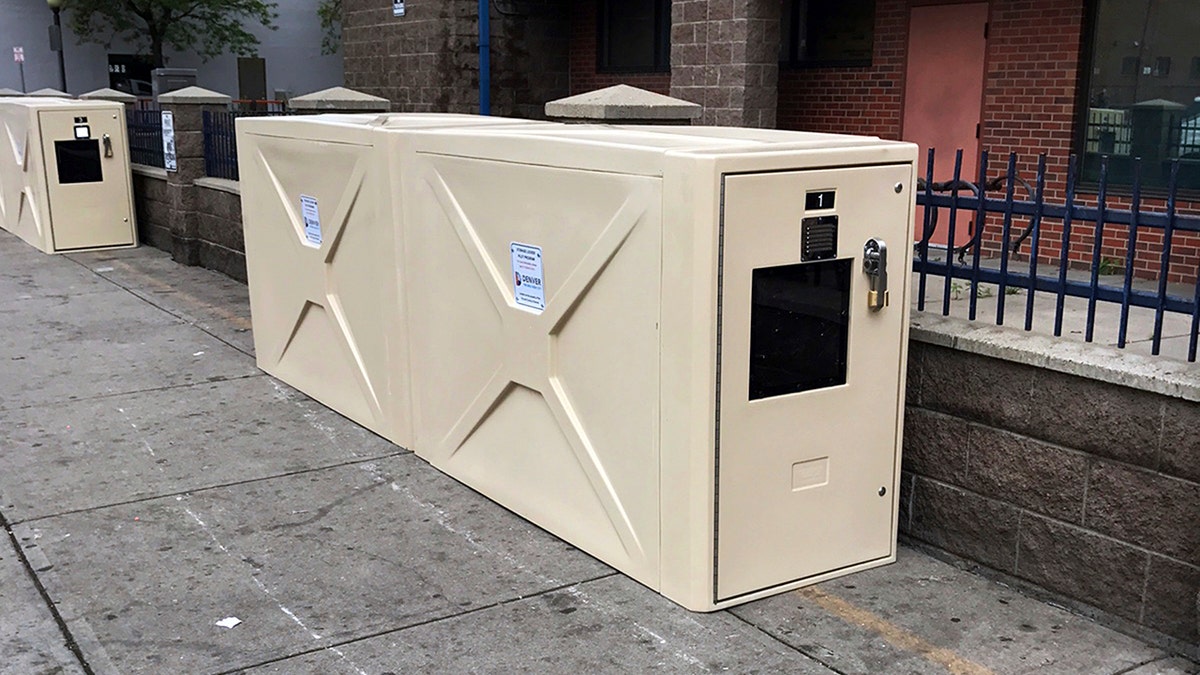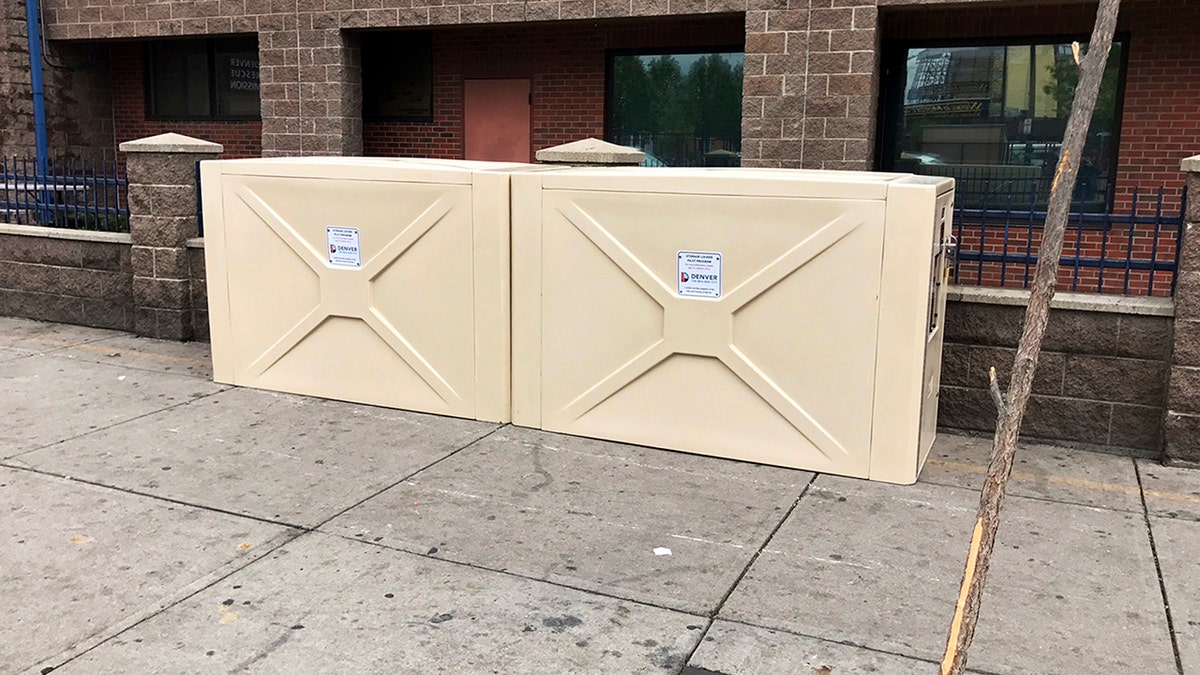
This May, 2017 photo provided by the City and County of Denver shows large lockers that the city had installed for homeless people to store their belongings in. Denver officials have removed large outdoors storage containers set up last year for homeless people after officials discovered that people were living inside them. The city's homelessness agency says people were living in the 10 unventilated units day and night. (City and County of Denver via AP) (City and County of Denver)
An experiment that was supposed to help Denver’s homeless population came to an abrupt end this week.
City officials were forced to remove large outdoor storage containers that were meant to give homeless people a safe place to store clothing and other possessions after discovering that people were living inside them.
Chris Conner, director of the city’s Denver Road Home homelessness agency, told The Denver Post that they started seeing people remaining inside the 4-by-6-foot cabinets. He said there were also unconfirmed reports of people selling narcotics and allegations of prostitution inside the storage lockers
“There was a feeling that they had crossed a threshold and were making the area less stable and safe for people,” he said.

The city in a pilot program paid $30,000 for 10 4-feet by 6-feet containers meant to give homeless people a safe place to store clothing and other possessions. (City and County of Denver)
The city paid $30,000 to install 10 storage containers last year near Park Avenue and Lawrence Street, a busy intersection where large crowds of people congregate while waiting for access to services at the Denver Rescue Mission and other nonprofits, The Denver Post reported.
Initially the program was supposed to run for at least 90 days and ended up lasting closer to a year.
Homeless advocate Ray Lyall told the newspaper that while he was frustrated with the removal of the outdoor lockers, he’s not surprised that people were staying in them.
“If it’s cold, it’s wet, I’d have slept in those things, too,” he said. “I can’t blame them for that.”

The city's homelessness agency says people were living in the 10 unventilated units day and night. (City and County of Denver via AP)
The city is talking to a nonprofit group about moving the containers to another location that would likely be gated and only available to homeless people who are seeking jobs, Conner said.
Nonprofit groups and at least one business offer lockers for homeless people to use, some of them funded by the city. But they tend to be smaller and usually require people to check in with staffers before accessing them.
The Associated Press contributed to this report.

